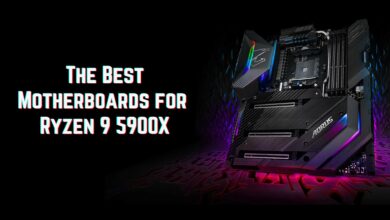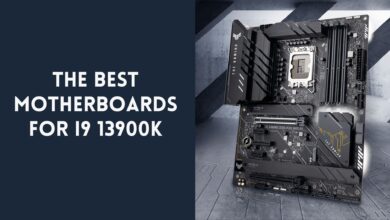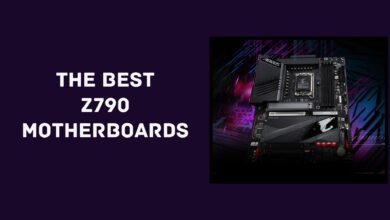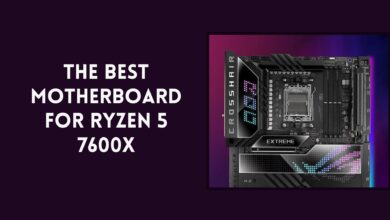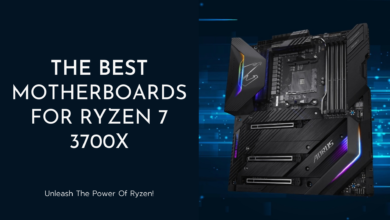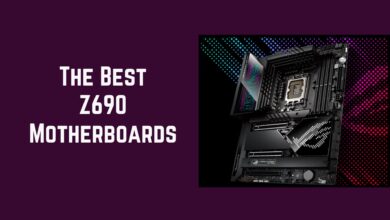The 7 Best Motherboards For Core i7-13700K In 2024
The new Core i7 13700K has landed on shelves all across the world, which gives us the ideal opportunity to find the best motherboard for i7 13700K. This high-end Intel Raptor Lake CPU is among the very best gaming CPUs you can currently buy right now.
With the new 13th Generation of desktop processors, Intel has given us an incremental upgrade over the outgoing 12th Gen Alder Lake lineup. The new CPUs have more cores, a better architecture, and a better feature set.
Keeping in mind that the Core i7 13700K is one of the most demanding CPUs on the market right now, it needs to be paired with a competent motherboard. Our specialized team of hardware experts has curated a selection of the top motherboards that can maximize the potential of the i7 13700K.
Be sure to check out our list of the best motherboards for i9 13900K as well, since the two CPUs are compatible with the same set of boards.
The Best Motherboard for i7 13700K – Our Choices
| # | Preview | Product Name | Award | Details |
|---|---|---|---|---|
| 1 | 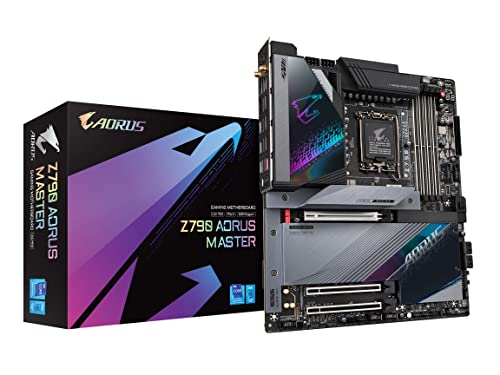 | Gigabyte Z790 AORUS Master | Best Overall Motherboard for i7 13700K | Check Price |
| 2 |  | ASUS ROG Maximus Z790 HERO | Best Premium Motherboard for i7 13700K | Check Price |
| 3 | 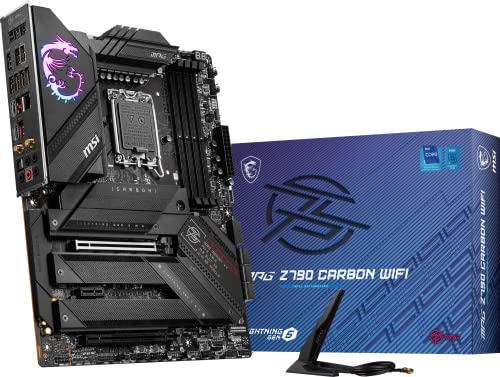 | MSI MPG Z790 Carbon WiFi | Best Overclocking Motherboard for i7 13700K | Check Price |
| 4 |  | MSI MAG Z790 TOMAHAWK WiFi DDR4 | Best DDR4 Motherboard for i7 13700K | Check Price |
| 5 | 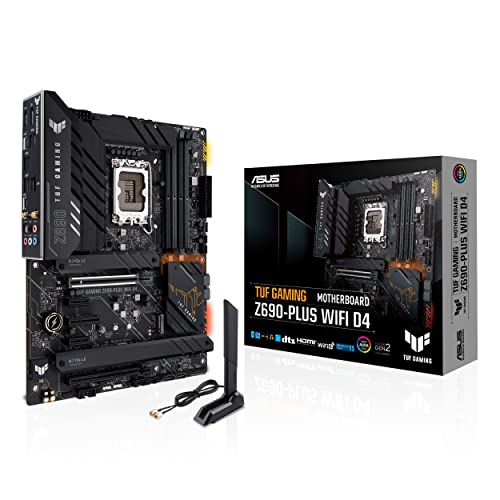 | ASUS TUF Gaming Z690-PLUS WiFi | Best Value Motherboard for i7 13700K | Check Price |
| 6 | 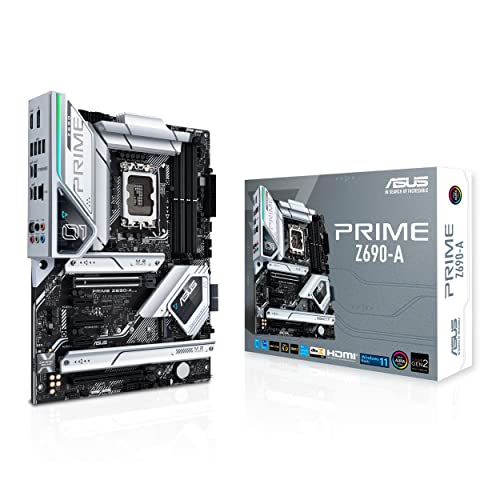 | ASUS PRIME Z690-A | Best Budget Motherboard for i7 13700K | Check Price |
| 7 | 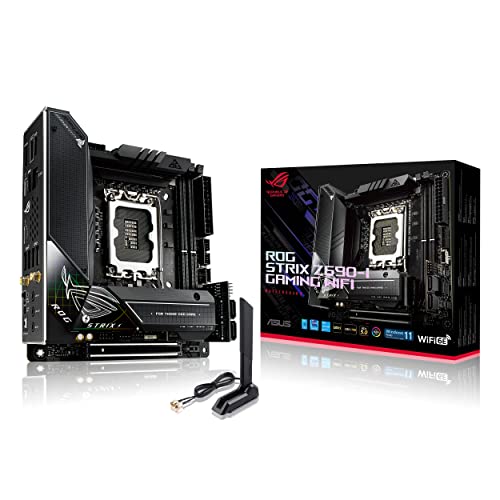 | ASUS ROG Strix Z690-I | Best Mini ITX Motherboard for i7 13700K | Check Price |
| # | 1 |
| Preview |  |
| Product Name | Gigabyte Z790 AORUS Master |
| Award | Best Overall Motherboard for i7 13700K |
| Details | Check Price |
| # | 2 |
| Preview |  |
| Product Name | ASUS ROG Maximus Z790 HERO |
| Award | Best Premium Motherboard for i7 13700K |
| Details | Check Price |
| # | 3 |
| Preview |  |
| Product Name | MSI MPG Z790 Carbon WiFi |
| Award | Best Overclocking Motherboard for i7 13700K |
| Details | Check Price |
| # | 4 |
| Preview |  |
| Product Name | MSI MAG Z790 TOMAHAWK WiFi DDR4 |
| Award | Best DDR4 Motherboard for i7 13700K |
| Details | Check Price |
| # | 5 |
| Preview |  |
| Product Name | ASUS TUF Gaming Z690-PLUS WiFi |
| Award | Best Value Motherboard for i7 13700K |
| Details | Check Price |
| # | 6 |
| Preview |  |
| Product Name | ASUS PRIME Z690-A |
| Award | Best Budget Motherboard for i7 13700K |
| Details | Check Price |
| # | 7 |
| Preview |  |
| Product Name | ASUS ROG Strix Z690-I |
| Award | Best Mini ITX Motherboard for i7 13700K |
| Details | Check Price |
Last Update on 2024-10-23 at 07:24 / Affiliate links / Images from Amazon Product Advertising API
Why you should trust us
We live, breathe, and eat motherboards here at appuals.com. Whether it’s the latest Intel or AMD chipsets, we know our way around a motherboard. We’ve been reviewing them for years, and our experience shows in our detailed, comprehensive reviews. Our leading PC hardware expert, Hassam Nasir, boasts a tremendous experience in the field of motherboard reviews which spans back to the days when Nvidia used to add an extra SLI chipset to motherboards!
One can say that he loves to get into the nitty gritty details of PC hardware such as PCB analysis, VRM performance, memory/core overclocking potential, cooling potentials of AIOs, and the list goes on and on. His expertise does not come as a surprise, since he has been obsessed with PC hardware from the era of Opterons and Smithfield Pentium processors.
However, we don’t just rely on our experience – we also put every motherboard we review through a rigorous testing process. We test for stability, compatibility, overclocking potential, and more. Our team’s key expertise lies in the area of VRM testing, both for quality and long-term reliability. Of course, we also take into account the user experience when writing our reviews. Whether you are looking for a budget-friendly option or the absolute best motherboard on the market, we can help you find what you need.
1. Gigabyte Z790 AORUS Master
Best Overall Motherboard for i7 13700K
Form Factor: E-ATX | Chipset: Z790 | Memory: 4x DIMM, 128GB, DDR5-8000 | Video Outputs: DisplayPort | USB Ports: 14x rear IO, 9x internal | Network: 1x 10 GbE LAN, 1x Wi-Fi 6E | Storage: 5x M.2, 4x SATA | VRM: 20+1+2 Phase
With the Raptor Lake processors, Gigabyte’s AORUS range of motherboards continues to offer outstanding premium products. Although it has a high price tag, the Z790 AORUS Master board combines a potent power delivery system with some exceptional features that are almost too good to be true.
We also selected this motherboard in our roundup of the best motherboards for i5 13600K, which shows the versatility of this particular option.
The Z790 AORUS Master board’s VRM setup, which is its most premium feature, has a very remarkable 23-phase architecture. In this configuration, 20 of those phases are devoted to providing the CPU with clean, reliable power. Even on the high-end i7 13700K CPU, you can anticipate a premium CPU overclocking experience thanks to the 105A available for the CPU.
Temperatures won’t ever be a problem thanks to the VRM’s effective cooling system. Multiple heatsinks effectively reduce any extra heat produced by the VRM components without affecting performance in any way. This is especially useful when you are running an overclocked i7 13700K on a day-to-day basis.
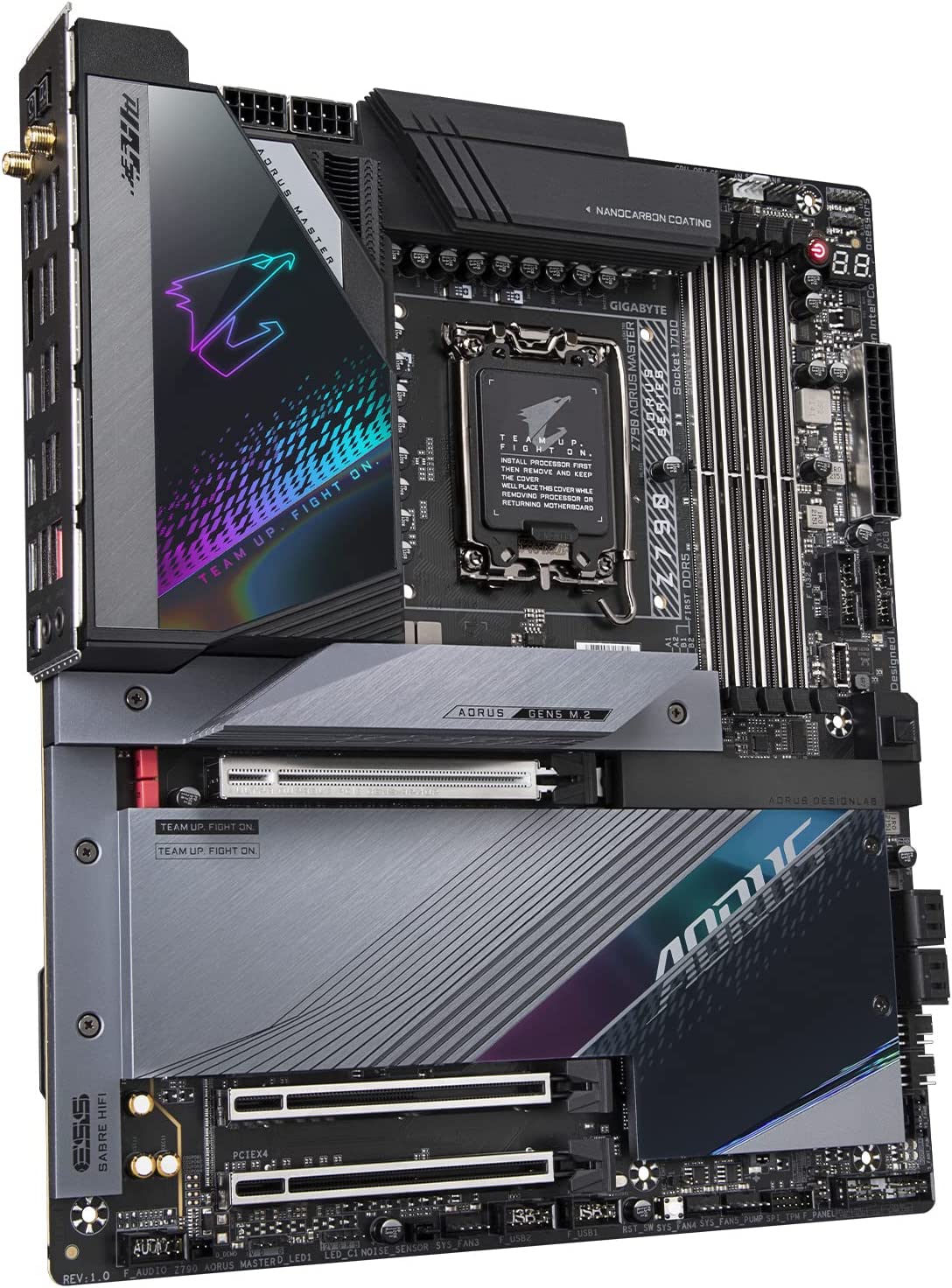
For gamers and enthusiasts, the Gigabyte Z790 AORUS Master is a top-tier motherboard with a plethora of features. This one is a DDR5 model, which works with any current Raptor Lake processor, including the Core i7 13700K, and supports DDR5 memory up to 8000MT/s.
Furthermore, it also has four M.2 slots, a ton of high-speed USB connections, and support for up to six SATA drives for your storage and connectivity needs. Networking is particularly impressive as it also includes a 10 GbE LAN port for wired connections as well as Intel’s most recent Wi-Fi 6E standard for quicker and more reliable networking.
The Marvell 10 GbE LAN functionality really sets this board apart from others at this pricing range. For enthusiasts and creative professionals, this function makes this board the perfect choice. A full collection of capabilities for tweaking and overclocking is also included in the Z790 AORUS Master, including an advanced UEFI BIOS and support for Intel’s Extreme Memory Profile (XMP) standard.
The lack of an HDMI output on the rear I/O is a minor inconvenience, as it can be quite useful for troubleshooting.
Many users place a premium on a motherboard’s appearance, and the Gigabyte Z790 AORUS Master does not let them down. The board has a pleasant appearance, with a simple layout and soft lighting. The color scheme is striking without being excessive, and the RGB lighting is skillfully implemented.
The board’s overall appearance is contemporary and attractive, and it would be a great addition to any gaming setup. We prefer a more subdued application of the design over the I/O cover, but the current design is striking in its own right.
More premium Gigabyte motherboards can be found in our list of the best motherboards for i7 12700K.
Ultimately, the Z790 AORUS Master is one of the finest motherboards available and ought to be taken into consideration if you’re looking for the ideal choice for the i7 13700K. With a feature set that is so extensive and a robust power delivery system, it has almost unrivaled overclocking potential.
Its pricing, which is among the most expensive options, is the only drawback. However, the Z790 AORUS Master should be at the top of your list if you’re looking for the best overall motherboard for i7 13700K.
2. ASUS ROG Maximus Z790 HERO
Best Premium Motherboard for i7 13700K
Pros
- Robust Power Delivery
- Loads of Connectivity
- Unique Aesthetics
- Excellent Storage Suite
Cons
- Extremely Expensive
Form Factor: ATX | Chipset: Z790 | Memory: 4x DIMM, 128GB, DDR5-7800+ | Video Outputs: HDMI, 2x USB-C | USB Ports: 12x rear IO, 9x internal | Network: 1x 2.5 GbE LAN, 1x Wi-Fi 6E | Storage: 5x M.2, 6x SATA | VRM: 20+1 Phase
The ASUS ROG Maximus Z790 HERO is one of the best premium motherboards available for the i7 13700K at the very top end of the pricing range. It provides a superb overclocking platform and is crammed full of features. The build quality is great as well, even though the cost is a bit excessive.
Keeping pricing to one side, we can safely say that the ASUS ROG Maximus Z790 HERO is one of the best motherboards for gaming on the Z790 platform.
The power delivery system is unquestionably this board’s shining beacon. One of the top VRMs available on any motherboard on the market is found in the ASUS ROG Maximus Z790 HERO. It is a 20+1+2 phase VRM and makes use of some of the highest caliber parts. The powerful VRM of the Maximus Z790 HERO allows for unrestricted overclocking of the Core i7 13700K.
Additionally, for maximum heat dissipation, the VRM assembly is cooled by sizable aluminum heatsinks connected to heat pipes. As it can handle any CPU you throw at it and provides rock-solid power delivery for stable performance, this motherboard is ideal for overclocking and gaming.
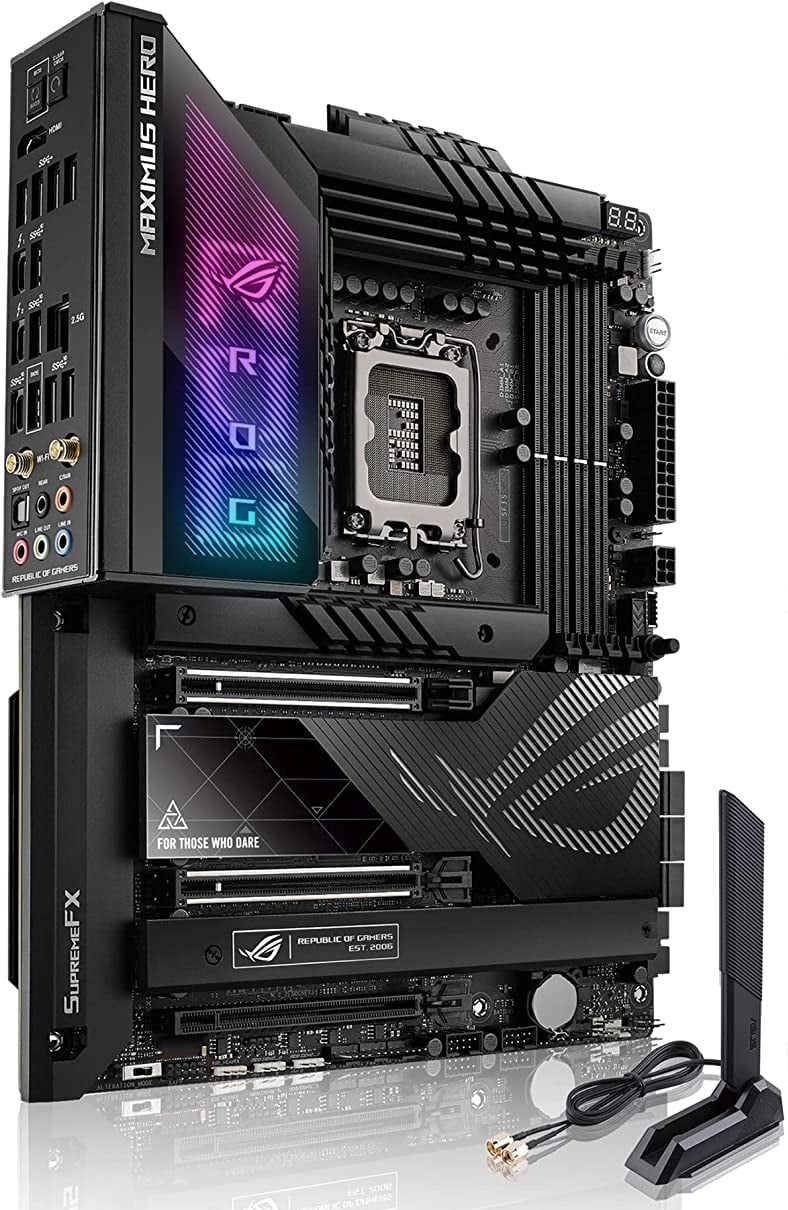
Regarding features, the ASUS ROG Maximus Z790 HERO is a deluxe motherboard with a ton of special attributes that make it perfect for gaming and other demanding tasks. It has five M.2 slots for high-speed NVMe SSDs, which makes it perfect for gamers that need to store a lot of data.
Moreover, the motherboard has integrated WiFi 6E and 2.5 GbE LAN connectivity so you can have a constant online connection. On this particular motherboard, ASUS has not added a 10 GbE LAN connector, which would have been a very nice addition and can be quite useful for creative professionals.
Likewise, it boasts a total of 12 rear USB ports, so you won’t have to worry about running out of ports when connecting all of your accessories. This motherboard offers every capability and is excellent for both gaming setups and PCs with a productivity focus.
The ASUS ROG Maximus Z790 HERO’s design is certain to draw attention. The powerful red and black color combination highlights the aggressive design, while the RGB lighting gives a touch of luxury. The overall aesthetic is one of strength and sophistication, and it will stand out in any gaming setup.
We really appreciate the new ROG retro style, which is visible in several RGB lighting locations. This board stands out from the competition due to its pixelated ROG script and logo. The ASUS ROG Maximus Z790 HERO features everything you require, whether you’re seeking style or functionality.
A similar ASUS option was selected in our roundup of the best motherboards for Ryzen 5 5600X as well.
One of the leading premium options for the Core i7 13700K is the ASUS ROG Maximus Z790 HERO. If you’re looking for a top-tier Z790 motherboard without any budget constraints, this one should be at the top of your shortlist since it delivers all the premium features and amazing performance.
The cost, which is among the highest you’ll find, is the one drawback. The ASUS ROG Maximus Z790 HERO, nevertheless, is our pick for the best premium motherboard for i7 13700K if you’re ready to pay more for quality.
3. MSI MPG Z790 Carbon WiFi
Best Overclocking Motherboard for i7 13700K
Form Factor: ATX | Chipset: Z790 | Memory: 4x DIMM, 128GB, DDR5-7600+ | Video Outputs: HDMI | USB Ports: 10x rear IO, 7x internal | Network: 1x 2.5 GbE LAN, 1x Wi-Fi 6E | Storage: 5x M.2, 6x SATA | VRM: 19+1+1 Phase
One of the finest motherboards available for the i7 13700K is the MSI MPG Z790 Carbon WiFi. This top-tier motherboard blends excellent features with overclocking performance. Provided that the motherboard is used with a high-end CPU like the i7 13700K, the price is not completely outrageous.
It is common knowledge that a solid power delivery system must be used with a high-end CPU like the 13700K. Premium components and a reliable cooling unit are used in the 19+1+1 phase VRM design of the MSI MPG Z790 Carbon WiFi. Even when the Core i7 13700K is overclocked, this VRM is more than capable of handling it.
Three separate heatsinks that are connected by copper heat pipes cool the VRM simultaneously. Due to this setup, the MSI MPG Z790 Carbon’s VRM design as a whole is of a high caliber and ought to be able to withstand even the most demanding overclocking scenarios.
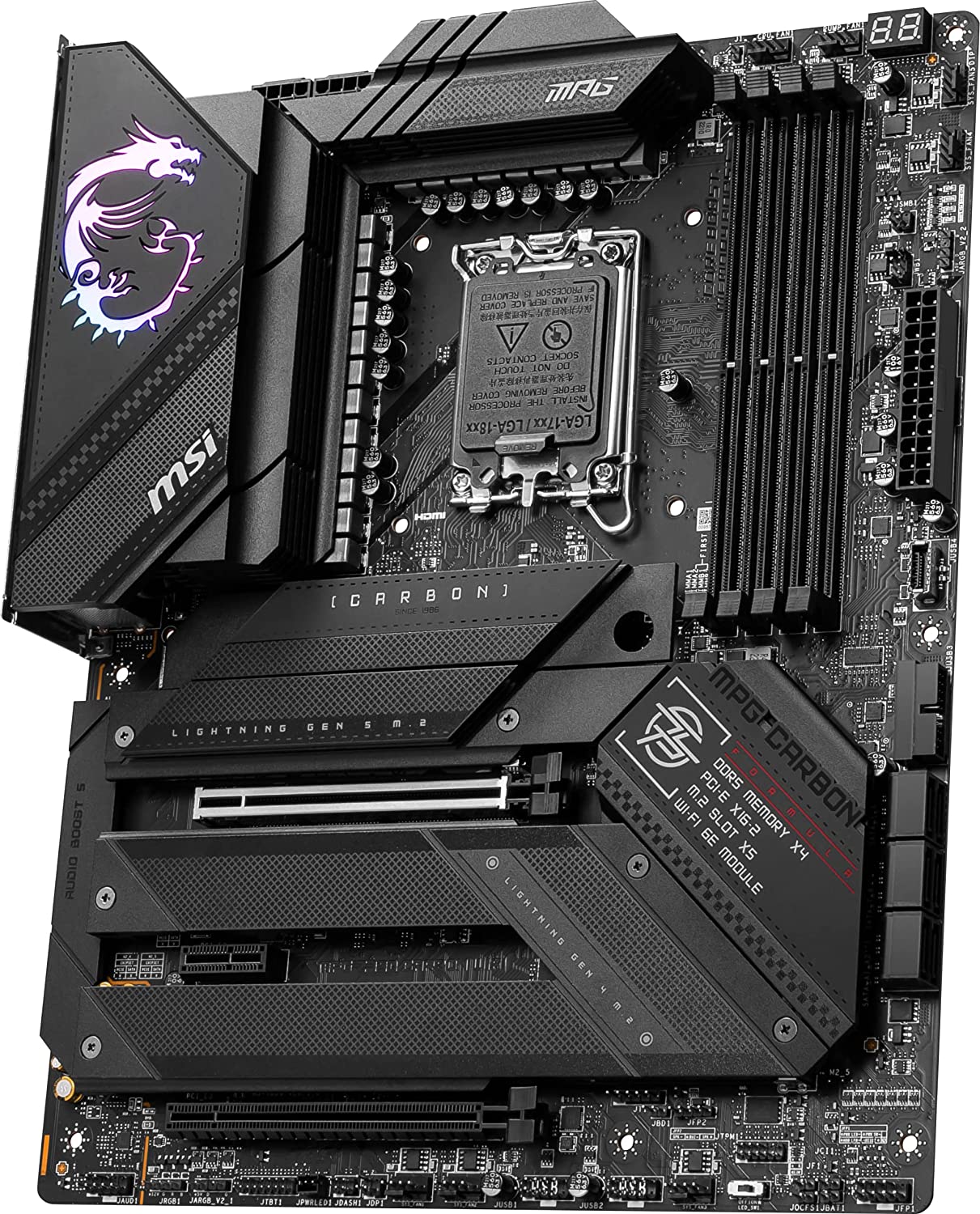
With its wealth of features, the MSI MPG Z790 Carbon WiFi offers consumers unrivaled networking and storage options. Your storage requirements are met by its five M.2 slots for PCIe Gen 4 SSDs or even Gen 5 NVMe devices, and Wi-Fi 6 is available for networking. It also has a 2.5 GbE LAN port if you prefer to stay wired and need more conventional functionality.
The board is crammed with USB ports of all different sizes and shapes on the connectivity front. Although this is to be expected from a board in this price range, it is still great to see. For troubleshooting, the Clear CMOS button is a helpful small addition.
When selecting a motherboard, aesthetics are crucial, and the MSI MPG Z790 Carbon WiFi doesn’t fall short in that regard. The board has a stylish appearance because of its sleek black design and subtle accents. This particular motherboard does an excellent job of departing from MSI’s conventional design language.
The MPG Z790 Carbon WiFi motherboard, despite being mostly focused on gaming, wouldn’t look out of place in a professional setup either, provided you turn off the MSI Dragon logo. The MSI MPG Z790 Carbon WiFi has excellent overall aesthetics and will look terrific in any setup.
A similar MSI option was also selected in our roundup of the best motherboards for i5 12600K.
All things considered, if you’re looking to build a high-performance gaming system based on the Core i7 13700K, the MSI MPG Z790 Carbon WiFi is one to shortlist. The MSI MPG Z790 Carbon WiFi’s exceptional overclocking capability, strong power delivery, and top-notch networking are some of its finest qualities.
Considering its overclocking prowess and relative pricing, the MSI MPG Z790 Carbon WiFi might be the best overclocking motherboard for i7 13700K currently available.
4. MSI MAG Z790 TOMAHAWK WiFi DDR4
Best DDR4 Motherboard for i7 13700K
Pros
- Relatively Affordable
- Support for DDR4 Memory
- Great Networking Features
- Competent Power Delivery
Cons
- Lack of RGB Lighting
Form Factor: ATX | Chipset: Z790 | Memory: 4x DIMM, 128GB, DDR4-5333 | Video Outputs: HDMI, DisplayPort | USB Ports: 10x rear IO, 7x internal | Network: 1x 2.5 GbE LAN, 1x Wi-Fi 6E | Storage: 4x M.2, 7x SATA | VRM: 16+1+1 Phase
Considering how well this combination works from a value standpoint, we also wanted to add a DDR4 model in our roundup of motherboards for the i7 13700K. The MSI MAG Z790 TOMAHAWK WiFi DDR4 is our choice for the best DDR4 motherboard for i7 13700K. Despite its slightly obnoxious naming pattern, the board is incredibly potent and actually competes with boards that cost significantly more money.
Our selection of the best motherboards for Ryzen 5 7600X also has more options worth checking out!
The 16+1+1 phase VRM arrangement is particularly intriguing since, considering the cost, it is a fairly durable setup overall. Tomahawk boards are incredibly popular thanks to their robust VRMs, and the Z790 variant maintains the trend. The Core i7 13700K is the ideal CPU for this particular board since you may overclock the CPU to your heart’s content and the board will be able to keep up with it.
MSI has also carefully considered the VRMs’ thermal solution. The heatsink assembly is massive and includes a heat pipe as well as numerous fin stacks. The power delivery components of this board are more than sufficiently cooled by this approach, and even when heavy loads are applied, the VRM configuration maintains its cooling and stability.
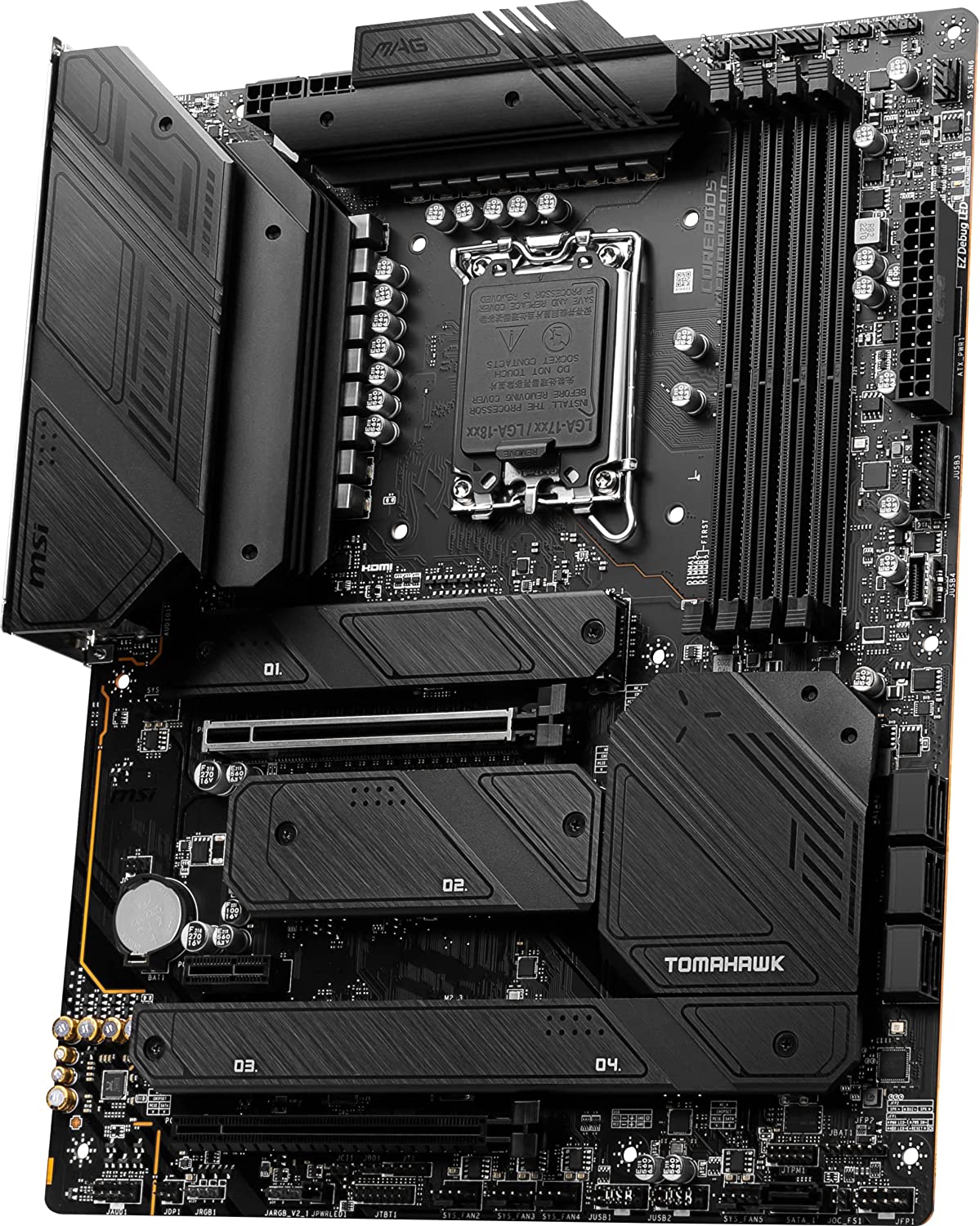
The Tomahawk is adorned with all of the modern features because it is a Z790 motherboard. The board provides seven SATA ports and four M.2 slots for your storage drives, while WiFi 6E and 2.5 GbE LAN are used to handle networking. This specific variant, as previously noted, offers DDR4 memory at speeds of up to 5333 MT/s, which is the optimal balance of performance and cost.
There are 10 USB ports of varying speeds and generations in the rear I/O, which is likewise substantially loaded. On the rear I/O, MSI has also included HDMI and DisplayPort outputs, which can be helpful for troubleshooting. Really, this motherboard’s feature set doesn’t have many shortcomings in it.
In terms of aesthetics, MSI has adopted an intriguing approach. The Tomahawk series has been updated to an all-black aesthetic, which is fairly quiet and unobtrusive. This variant looks pretty good and adheres to the same design principles. Although there are no garish design elements or excessive Mystic Light RGB lighting, the board nonetheless has a striking appearance.
For the modern trend of all-black or stealthy builds, this motherboard would be a perfect match. However, it lacks RGB lighting, which may be a contentious decision given your position on the issue. However, in our opinion, the board’s minimalism makes it look rather appealing.
All things considered, the MSI Z790 TOMAHAWK WiFi DDR4 is a solid choice. It has no glaring flaws, and generally, the feature set is fairly tempting given the price. If you look at the whole package, the DDR4 memory generation and the absence of RGB lighting are really the only minor drawbacks.
5. ASUS TUF Gaming Z690-PLUS WiFi
Best Value Motherboard for i7 13700K
Form Factor: ATX | Chipset: Z690 | Memory: 4x DIMM, 128GB, DDR4-5333 | Video Outputs: DisplayPort | USB Ports: 8x rear IO, 7x internal | Network: 1x 2.5 GbE LAN, 1x Wi-Fi 6E | Storage: 4x M.2, 4x SATA | VRM: 14+1 Phase
For the past few years, the ASUS TUF line has been recognized for its reliable and simplistic motherboards. The ASUS Z690-Plus WiFi board, one of the newest members of this illustrious bunch, delivers noteworthy features for its inexpensive price. Since we have chosen the DDR4 version of this board for this roundup, you do not even need to be concerned about throwing away your previous DDR4 modules.
Although the ASUS TUF Gaming Z690-Plus WiFi is not particularly expensive, ASUS did not skimp on the power delivery system. For any modern Raptor Lake CPU, the 14+1 phase VRM design is quite durable, and you may even experiment with moderate overclocking on your i7 13700K. The overclocking results might not be the highest, but you can certainly delve into moderate CPU overclocking with this combination.
Then again, the i7 13700K is already one of the best CPUs for gaming right now, so you afford to be a bit conservative with your overclock.
On this board, ASUS has also included some sizable VRM heatsinks that are sufficiently finned to improve heat dissipation. Even though you shouldn’t expect competitive overclocking results from a premium CPU like the i7 13700K, this configuration ought to be adequate for the majority of gamers out there.
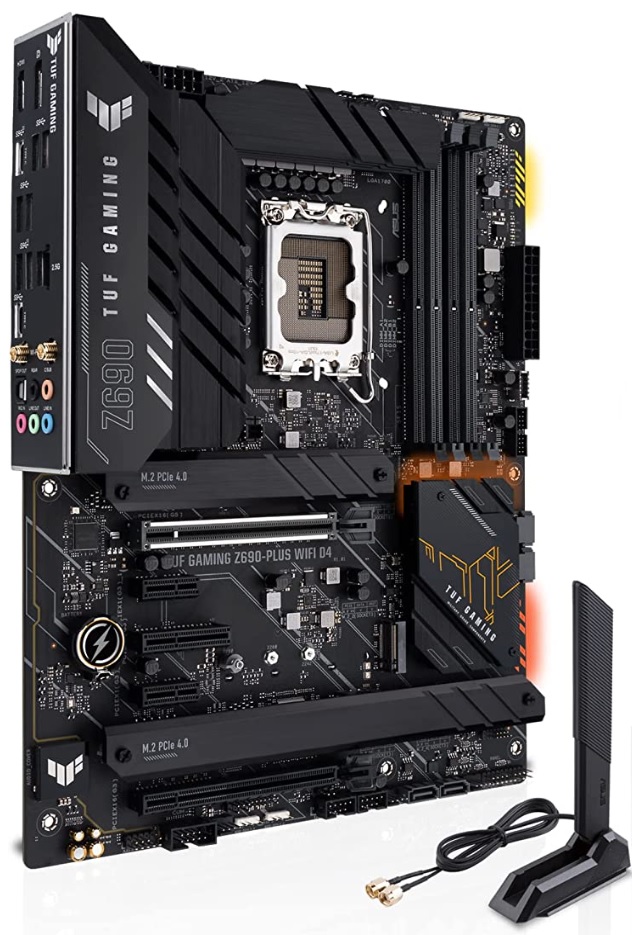
Compared to other motherboards in its class, the TUF Z690 Plus lacks an excessive number of USB ports. However, it does have typical 2.5GbE LAN and Wi-Fi capabilities for your networking needs. To improve this segment, we would have loved to see a few extra rear USB ports.
However, ASUS has included 4 M.2 storage slots on the board, which is a pretty respectable selection for modern gaming PCs. There is a DisplayPort output on the rear I/O, however, there isn’t an HDMI port, which would have been useful for troubleshooting.
We chose the DDR4 variant because the TUF Gaming Z690-PLUS is a good choice for those on a limited budget. The board natively supports DDR4 modules up to 5333 MHz and XMP memory overclocking. This motherboard’s value proposition is greatly enhanced by the usage of DDR4, making it a fantastic option on the cheap.
This motherboard looks exceptionally nice and adheres to the TUF brand’s aesthetic standards. Depending on your RGB configuration, the TUF logo illuminates in various colors, and the heatsink for the chipset even emits an RGB glow. However, the general design is rather dull and plain which may not be a perfect fit for a flashy gaming PC with RGB lighting everywhere.
In conclusion, the TUF Z690 Plus WiFi is a fantastic low-cost solution for gamers who seek performance and value without breaking the bank. You won’t be disappointed with this purchase because the board delivers its claims. The best value motherboard for i7 13700K can be identified as this one.
This particular motherboard was also chosen in our selection of the best Z690 motherboards.
6. ASUS PRIME Z690-A
Best Budget Motherboard for i7 13700K
Form Factor: ATX | Chipset: Z690 | Memory: 4x DIMM, 128GB, DDR5-6000 | Video Outputs: HDMI and DisplayPort | USB Ports: 8x rear IO, 7x internal | Network: 1x 2.5 GbE LAN | Storage: 4x M.2, 4x SATA | VRM: 16+1 Phase
The ASUS PRIME Z690-A, one of the most affordable Z690 motherboards on the market, is our next pick for the i7 13700K. It’s a brilliant choice for anyone looking for a competent and reasonably priced Z690 motherboard. The PRIME Z690-A is one of the most underappreciated motherboards right now on the market owing to its decent features and VRM performance.
Be sure to check out our selection of the best motherboards for Ryzen 9 7950X as well for more ASUS motherboards.
The Z690-A PRIME’s VRM components are not the greatest in the industry since it is a value-oriented motherboard. With the exception of a handful of the most demanding SKUs, it is nevertheless adequate for the majority of the Intel 13th Gen Raptor Lake lineup. As a result, you can count on the 16+1 phase VRM to manage the Core i7 13700K using the default voltage settings.
Furthermore, the VRM’s substantial heatsinks are connected via a heat pipe to provide adequate cooling. The board’s thermal performance isn’t as good as some of the aforementioned options, but it’s still serviceable for daily use in a gaming PC.
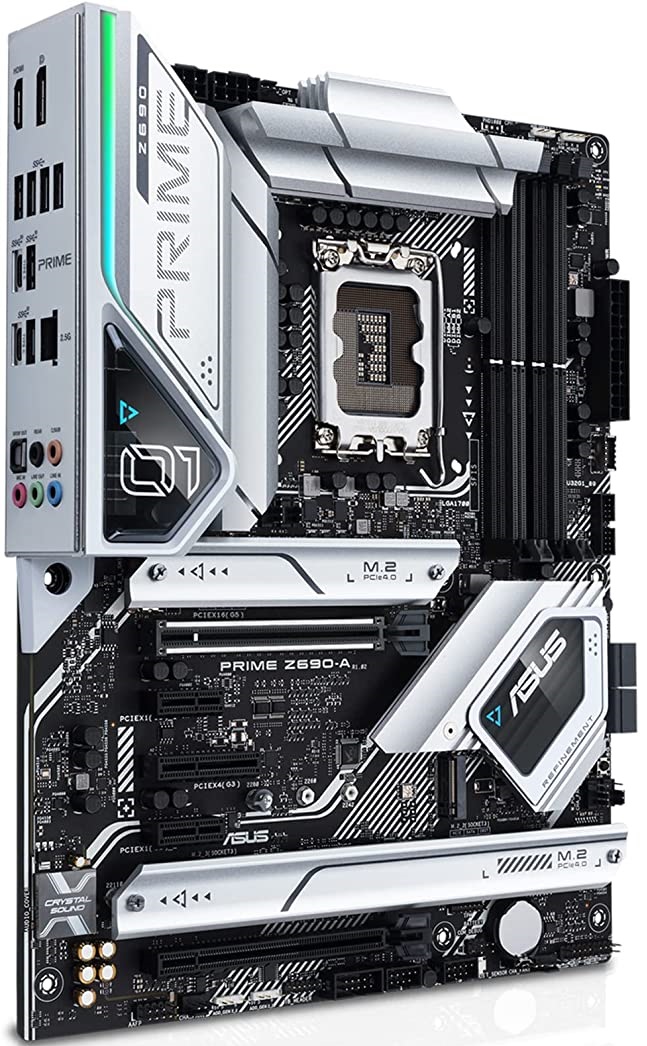
When it comes to the feature set, the ASUS PRIME Z690-A is a basic motherboard that makes some sacrifices. The PRIME Z690-A has a 2.5 GbE LAN port for fast networking, but the version we chose does not include WiFi. We believe that using this cost-cutting approach on a Z690 motherboard in 2024 is unacceptable and ASUS should have included WiFi 6E on all available variants.
You can easily fix that by picking up any one of the best PCIe WiFi cards out there.
Along with numerous SATA connections for conventional hard drives and SSDs, it also has four M.2 slots for ultrafast NVMe SSDs. The PRIME Z690-A has a total of eight rear USB ports, which is also a limited number in terms of connectivity. The addition of a Thunderbolt 4 port on the back I/O, which is unusual for budget motherboards, is a nice touch.
The ASUS PRIME Z690-A is a true beauty in terms of appearance. This may be regarded as the motherboard’s distinguishing quality, and it is unquestionably a selling point. The motherboard has a streamlined and fashionable appearance that is enhanced by its all-white color scheme. The board works well with current gaming PC designs, especially if you plan to build a white-themed PC.
The board also has RGB lighting that is customizable to produce a variety of styles. The placement and layout of the RGB zones were also carefully considered.
On the subject of value-oriented motherboards, don’t forget to check out our selection of the best B450 motherboards as well.
All things considered, the ASUS PRIME Z690-A is an excellent board for anyone searching for a high-quality 13th Gen Intel motherboard without going over the budget. It works fairly well in terms of power delivery and has all the features you would want in a good board. The ASUS PRIME Z690-A is the best budget motherboard for i7 13700K on our list, and should definitely be considered.
7. ASUS ROG Strix Z690-I
Best Mini ITX Motherboard for i7 13700K
Form Factor: Mini ITX | Chipset: Z690 | Memory: 2x DIMM, 64GB, DDR5-6400 | Video Outputs: HDMI | USB Ports: 9x rear IO, 5x internal | Network: 1x 2.5 GbE LAN, 1x Wi-Fi 6E | Storage: 2x M.2, 4x SATA | VRM: 10+1 Phase
The ASUS ROG Strix Z690-I is our choice for the best mini ITX motherboard for i7 13700K, and for a number of good reasons. Compact gaming PCs are currently quite prevalent, so now is the time to build a small form factor gaming rig with this motherboard. If you’re shopping for a high-end, compact 13th Gen motherboard with all the bells and whistles, it’s one of the best options available.
Our selection of the best mini ITX motherboards for i9 9900K can also be helpful for users of that platform.
It also stands out from all the motherboards that seem similar due to its distinctive design. Gamers are always concerned with a product’s appearance, and the motherboard is no exception. There is no doubt that users will like the sleek and contemporary look of this motherboard. The RGB lighting adds a dash of elegance while maintaining the classic gaming aesthetic of black and silver.
The I/O section of the motherboard is also covered by a shroud, which looks nice and keeps the PCB organized. The ROG eye, which has become a recognizable design element in gaming devices, is included in the corner of the I/O cover.
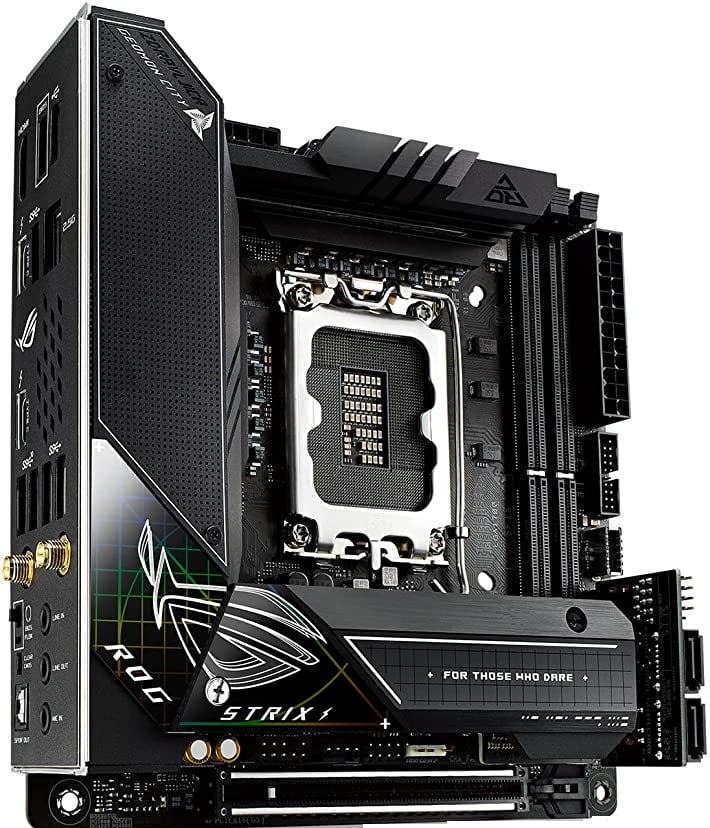
The ROG Strix Z690-I is not all about looks, however. The motherboard’s 10+1 phase architecture and excellent components make its VRM setup fairly durable. This guarantees stable power delivery, even while overclocking Raptor Lake CPUs that are more demanding. Although the VRM is not as powerful as some of the more costly ASUS motherboards, it still does a good job.
Large aluminum heatsinks are used to cool the VRM, which also aids in regulating temperatures. Almost any 13th Gen CPU can be handled by the Strix Z690-I, however, there are practical limits to its power that should be respected. You cannot expect a lot of overclocking output from this motherboard when paired with the Core i7 13700K.
The ASUS ROG Strix Z690-I is a very competent mini ITX motherboard with a broad feature set and excellent networking capability. The motherboard has two M.2 slots for super-fast storage, while the networking suite is comprised of WiFi 6 compatibility for lightning-fast wireless rates, and a sturdy 2.5 GbE LAN port, making it perfect for tiny form factor designs.
The motherboard also offers a wide range of connectivity options, including rear HDMI and USB 3.2 Gen 2 ports. The HDMI port is handy for those sporadic times when troubleshooting is necessary. The Strix Z690-I, however, has the same drawbacks as other mini-ITX motherboards due to their size constraints.
There are just 2 DIMM slots available for DDR5 memory, which may prove to be a drawback in the future. Additionally, there is just one full-size x16 PCIe slot available on the board for expansion. The mini-ITX form factor, not the board itself, is to blame for these shortcomings.
Nevertheless, the ROG Strix Z690-I is one of the best mini ITX boards available, and if you’re looking for a high-performance option, it should be on your list. Because of its remarkable power delivery system, it boasts respectable overclocking capability and a robust feature set that is uncommon in a mini-ITX board.
We also crowned this motherboard as one of the best motherboards for i9 12900K.
The ROG Strix Z690-I is a great choice for the i7 13700K if you are building a compact gaming rig, with the only major drawback being that it is relatively pricey.
How we picked and tested
Since the Intel Core i7 13700K is one of the fastest gaming CPUs available, selecting the appropriate motherboards for it requires considerable diligence. Naturally, we established rigorous criteria for the purposes of this roundup.
We first focused on the quality and quantity of VRM phases provided by the motherboard, which could have a significant impact on performance. The Core i7 13700K’s key selling feature is its ability to overclock, thus the motherboard’s power delivery system must be able to keep up with these demands.
Since any VRM configuration is only as good as the cooling system attached to it, we also gave top priority to the cooling system adopted by motherboard manufacturers to cool the VRM components.
We also made sure that the selected motherboards provide all of the connectivity and networking features that one could need with a Core i7 13700K in order to get the optimal day-to-day experience. These features are necessary for a gaming motherboard to deliver the best experience in gaming and productivity tasks.
Although aesthetics are a subjective matter, we did give priority to motherboards that were more well-liked by consumers due to their design. Any key missing features in this department were also noted.
Finally, the motherboards’ value proposition served as the main decisive element. Despite the fact that the Core i7 13700K is a premium gaming CPU, it doesn’t hurt to look for the maximum value when you are searching for the ideal motherboard for it.
Our diligent group of hardware professionals did a thorough job of testing our final motherboard choices to establish a useful set of data. To create an empirical and objective conclusion on the boards, the team thoroughly investigated every facet of the motherboards.
To make things more specific, we conducted comprehensive VRM testing by monitoring the temperatures of the boards’ VRMs while a Core i7 13700K processor was overclocked and kept in a closed chassis for prolonged periods of time.
This gave the editorial team a great idea of the quality of the different VRM setups employed by the motherboards.
Combining the testing data with the objective analysis of the motherboards’ features and price, we have curated a selection of the best motherboards you can buy for the Core i7 13700K.
Intel Core i7 13700K vs AMD Ryzen 7 7700X
As soon as the Intel Core i7 13700K was officially released by Intel, enthusiasts started drawing comparisons to AMD’s Ryzen 7 7700X CPU. Both these high-end gaming CPUs fall around the $400 mark, so it is quite a straightforward comparison when it comes to value.
According to initial benchmark findings, the Core i7 13700K beats the Ryzen 7 7700X in most gaming scenarios. This puts the 13700K at a major advantage in terms of value as well, considering the Intel CPU is roughly the same price as the Ryzen offering at MSRP.
Depending on the situation, the Ryzen 7 7700X and Core i7 13700K exchange blows in productivity workloads. While some tasks benefit from the “real” cores of the Ryzen CPU, others get superior overall performance from the Intel CPU’s E-cores.
Not to mention, the Core i7 13700K supports older Z690 motherboards and less expensive DDR4 memory. On Intel, the whole platform price is substantially lower, which is not something we typically associate with Intel. The cost of entry is lower, and the value proposition is higher if you go with the blue team in this comparison.
The main advantage that swings in the favor of the Ryzen 7 7700X is the upgrade path. The AM5 platform of the Ryzen 7000 series is significantly more “future-proof” than the Intel 13th Gen platform, and AMD has promised to support that socket for a few more years still. On the flip side, this is the last generation of CPUs that will be released on the LGA1700 socket from Intel.
At the end of the day, you can’t really go wrong with either of the two choices. The Intel Core i7 13700K gets our slight recommendation due to its superior gaming performance and cheaper cost of entry right now, but that can change in a few years when the AM5 platform’s upgrade path will hold more value.
Z790 vs. Z690
Even though Z790 is a brand-new chipset developed specifically for 13th Gen Raptor Lake processors, it doesn’t offer many ground-breaking innovations. It is a gradual improvement over Z690 and does not necessarily call for users of the Z690 platform to upgrade.
Like the Z690 platform, the Z790 chipset is compatible with both 12th and 13th-generation Intel processors. The connectivity and rear I/O specifications of the two motherboard chipsets are where the improvements are most noticeable. In comparison to Z690, the new Z790 chipset adds four additional PCIe Gen 4 downstream lanes, as well as an additional USB 3.2 Gen 2×2 20 Gbps port.
The majority of these minor adjustments involve networking and storage functions. On Z790 motherboards, you could get an extra M.2 slot or a few extra USB ports here and there, but the improvements are, to put it mildly, incremental.
Therefore, you can go with either a Z790 or Z690 motherboard for the new 13th Gen Intel processors without losing a whole lot. This is why we have recommended multiple Z690 motherboards for the i7 13700K in this roundup. These older motherboards can be found much more easily on the market, and are often cheaper than Z790 options.
Buyer’s Guide
It’s crucial to bear in mind a few factors that will make your shopping experience a lot simpler. Motherboards are infamously challenging to buy because their product pages don’t contain a great deal of useful information.
It can be challenging to determine how much you should really spend on a motherboard because the answer varies on a case-to-case basis. When selecting your new motherboard, keep the following things in mind.
Form Factor
The form factor is one of the most major elements to take into account when selecting a motherboard. The motherboard’s form factor, which refers to its size and shape, influences how much space it will occupy in your case. The ATX, micro ATX, and mini ITX form factors are the three most prevalent.
The ATX form factor is the biggest and offers the maximum room for multiple expansion cards and other components. Micro ATX is a smaller form factor that is more compact than ATX but still offers plenty of expandability. At the extreme end of the spectrum, mini ITX is the smallest form factor and is intended for small cases or projects where space is at a premium.
Nowadays we are also seeing a rise in the number of E-ATX or “Extended ATX” motherboards, which are even bigger than standard ATX motherboards. This form factor is usually employed in premium motherboards that offer a lot of features and capabilities.
You should think about how much space you have in your case and the components you need to fit before selecting a form factor. For instance, an ATX motherboard is essential if you wish to use several graphics cards in SLI or CrossFire. A mini ITX motherboard is the best option if you want a small setup that doesn’t take up much room.
In the end, it’s crucial to choose a form factor that offers you the optimal balance of size and features for your requirements.
Power Delivery
The VRM architecture or power delivery is one of the most crucial factors to take into account when purchasing a motherboard. Voltage Regulator Module, often known as VRM, is in charge of providing the CPU with stable and clean power.
While a bad VRM design can result in instability and overheating, a good VRM design will enable improved overclocking and stability. Modern CPUs are quite demanding in terms of power, so they can even alter their boosting behaviors depending on the quality of the VRM.
The Core i7 13700K needs a robust VRM design in order to be overclocked properly because it is a very power-hungry CPU. A good VRM design will also offer enhanced cooling thanks to the improved efficiency of the components. You should also take into account the design and efficacy of the VRM heatsinks on the motherboard itself.
Check the reviews of the VRM design when looking at motherboards to be sure you are buying a high-quality item. There is a ton of empirical data available online regarding the power delivery characteristics of various motherboards.
Remember that the number of “phases” a VRM has is not always a good indicator of the efficiency of the power delivery system. The best course of action is to read user and expert reviews regarding a specific motherboard’s VRM performance.
DDR5 vs. DDR4
Which type of RAM to select is one of the first concerns you’ll need to address while upgrading your PC. Do you choose the more established, more mature DDR4 standard or the more modern DDR5? Both have benefits and drawbacks, so it’s critical to recognize the differences before choosing one over the other.
The prevalent generation of memory is DDR4, with DDR5 projected to overtake it soon. DDR4 is therefore more readily accessible and typically less expensive. However, on the flip side, DDR5 has lower latencies and faster data rates than DDR4 and delivers a substantial performance improvement over DDR4.
Additionally, DDR5 consumes less power than DDR4 and can operate cooler, and have a longer lifespan. DDR5 is therefore anticipated to replace DDR4 as the new industry standard for high-end laptops and PCs.
DDR4 is still most likely your best option if you want to upgrade your PC right now. It makes a lot more sense from a value perspective as well. However, DDR5 is something to think about if you would like to go for the most recent and cutting-edge technology. However, early adopters will need to be ready to pay more for the ability to use cutting-edge memory.
This is one of the most important questions for those purchasing new Intel 13th Gen motherboards because the answer will determine your entire upgrading route in the future. Be sure to take into account the chance that DDR5 memory could develop quickly over the next few years. This can mean that whatever DDR5 modules you buy today could be outdated in just a few short years.
Storage, Networking, and Connectivity
When choosing a motherboard for the Core i7 13700K, you should certainly look for a few key features. The three most important categories to consider are storage, networking, and connectivity features. You can also take into account diagnostic features but those are unique to each motherboard model.
For connectivity, the most important characteristics to look for are USB ports, Thunderbolt 4 connectors, and high-speed USB 3.2 Gen 2 Type-C ports. You should take into account both the number and the speed of the various USB ports offered by the motherboard.
Secondly, it is important to consider the storage characteristics of the motherboard. Nowadays, PCIe 4.0 SSDs are commonplace, and we are even expecting new PCIe 5.0 SSDs to hit the market soon. It is important to note how many PCIe M.2 slots are offered by the motherboard, and how many of them support PCIe 4.0 and PCIe 5.0 protocols.
In addition to these qualities, networking is a crucial factor to take into account when buying a motherboard. In a high-end gaming setup with the Core i7 13700K, premium networking features like 2.5 GbE LAN and WiFi 6E are practically essential. You can also look at motherboards with a 10 Gigabit LAN port if you are a creative professional. The most modern motherboards support these capabilities.
These are a few of the features that will work well with your premium Core i7 13700K processor.
Aesthetics
Aesthetics is largely viewed as a personal decision. However, aesthetics should unquestionably be taken into account while selecting a motherboard. The layout and appearance of a motherboard can significantly affect how a build appears overall. Additionally, factors like RGB lighting and software modification might have an impact on aesthetics.
Be sure to look for distinctive design elements that can make a motherboard stand out in your build. For RGB lighting, it is often helpful to take into account the software ecosystem of the particular motherboard. You should consider the possibility of tying in your motherboard’s lighting with the rest of your PC components.
Despite the fact that aesthetics are ultimately a matter of taste, it is nevertheless crucial to take into account how a motherboard will appear in a build before making a purchase. Given the wide variety of motherboards available, considering their appearance can help to reduce the available choices and make selecting the best board for a build much simpler.
If you’re still unsure about your motherboard choice, fret not. Our comprehensive motherboard buying guide will arm you will all the knowledge you seek about the motherboard buying experience.
Best Motherboard for i7 13700K - FAQs
You do not need DDR5 memory for i7 13700K. It supports both DDR5 and DDR4 memory, so you can use either memory technology with this CPU. However, you will need a motherboard that supports that particular memory generation specifically.
The motherboards that support the i7 13700K include the Z790 and Z690 chipsets, as well as H670, B660, and H610 chipsets. The budget H770, H710, and B760 chipsets have not been released at the time of writing. You will need a BIOS update to run a 13th Gen processor with a 600 series motherboard.
Generally, the i7 13700k is better than the Ryzen 7 7700X in gaming applications. The two CPUs are fairly competitive in productivity workloads, while the 13700K has the advantage of value. The Ryzen 7 7700X, on the other hand, has a better upgrade path for the future.
You can use an i7 13700K with a Z690 motherboard. The Intel 13th Gen Raptor Lake CPUs are compatible with all 600-series and 700-series motherboards. You may need a BIOS update to run the 13th Gen CPUs on an older 600-series motherboard.
The i7 13700K does support PCIe 5.0 technology. You can get PCIe 5.0 lanes directly to the main PCIe x16 slot as well as multiple M.2 slots on a Z790 motherboard. However, there are very few PCIe 5.0 devices on the market that can take advantage of this new technology right now.
 Check Price
Check Price